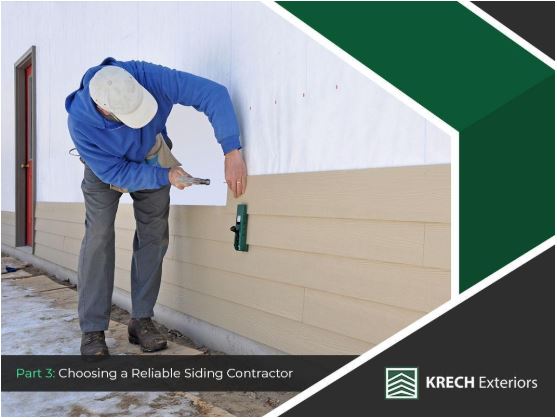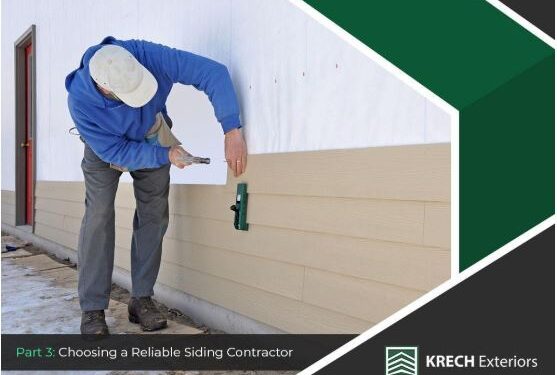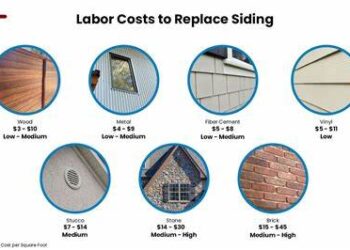As the backbone of any successful siding project, siding contractors play a crucial role in ensuring the quality and durability of installations. Let's dive into the world of siding contractors and explore what makes them indispensable in the construction industry.


Importance of Siding Contractors
Siding contractors play a crucial role in the construction industry, specializing in the installation, repair, and maintenance of siding materials on residential and commercial buildings. Their expertise ensures that the exterior of a building is not only visually appealing but also well-protected from the elements.Ensuring Quality Siding Installation
Professional siding contractors are equipped with the knowledge and skills necessary to deliver high-quality siding installations. They understand the different types of siding materials available and can recommend the best option based on the specific needs of a project. By working with a siding contractor, property owners can rest assured that the installation will be done correctly, following industry standards and best practices.Enhancing Durability of Siding
Siding contractors also play a key role in enhancing the durability of siding materials. Through proper installation techniques and regular maintenance, they ensure that the siding is able to withstand harsh weather conditions and remain in good condition for years to come. This not only protects the building but also helps property owners save on repair and replacement costs in the long run.Types of Siding Materials
When it comes to choosing siding materials for residential and commercial projects, there are several options available. Each type of siding material comes with its own set of pros and cons, influencing the decision-making process for contractors and property owners.Vinyl Siding
- Pros:
- Cost-effective
- Low maintenance
- Wide range of colors and styles
- Cons:
- Not as durable as other materials
- Potential for fading or cracking over time
Wood Siding
- Pros:
- Natural appearance
- Eco-friendly option
- Can be painted or stained
- Cons:
- Requires regular maintenance
- Prone to rot, pests, and moisture damage
Fiber Cement Siding
- Pros:
- Durable and long-lasting
- Resistant to pests, fire, and rot
- Low maintenance
- Cons:
- Higher initial cost
- Heavy and may require professional installation
Metal Siding
- Pros:
- Very durable and weather-resistant
- Modern and industrial aesthetic
- Recyclable and eco-friendly
- Cons:
- Susceptible to scratching or denting
- Potential for rust if not properly maintained
Siding Installation Process
When it comes to installing siding on a building, siding contractors follow a meticulous step-by-step process to ensure a quality finish that enhances the aesthetics and durability of the structure.Preparation for Siding Installation
Before the actual installation of siding begins, proper preparation is crucial. This includes:- Inspecting the exterior of the building to assess the condition of the existing siding and the substrate.
- Removing any old or damaged siding to create a clean surface for the new siding.
- Repairing any structural issues or damage to the building's exterior.
- Applying a weather-resistant barrier to protect the building from moisture infiltration.
Tools and Equipment Used
Siding contractors utilize a variety of tools and equipment to efficiently install siding. Some of the common tools include:- Siding nail gun: Used to fasten the siding material to the building.
- Siding cutter: Helps to cut siding panels to the required size and shape.
- Level: Ensures that the siding is installed straight and evenly.
- Tape measure: Used to accurately measure and cut siding material.
- Ladder or scaffolding: Enables access to higher parts of the building for installation.
Maintenance and Repair Services
Regular maintenance is essential to prolong the lifespan of your siding and keep your home looking its best. Siding contractors offer maintenance and repair services to ensure that your siding remains in top condition for years to come.Importance of Regular Maintenance
- Regular cleaning: Dirt, grime, and debris can accumulate on your siding over time, leading to discoloration and potential damage. Regular cleaning can help prevent this buildup.
- Inspection for damage: Regular inspections can help identify any issues with your siding early on, allowing for prompt repairs before they escalate into larger problems.
- Preventative measures: Siding contractors can provide preventative maintenance services to protect your siding from weather damage, pests, and other potential threats.
Common Issues Requiring Repair Services
- Cracks and holes: Damage such as cracks or holes in your siding can lead to water infiltration, causing rot and mold growth.
- Loose or missing panels: Loose or missing siding panels can compromise the integrity of your home's exterior and insulation.
- Warped or buckling siding: Warped or buckling siding can indicate underlying issues with the installation or moisture damage.
Identifying When Maintenance or Repairs are Needed
- Inspect for visible damage: Look for signs of cracks, holes, warping, or discoloration on your siding.
- Check for moisture: If you notice moisture buildup or water stains on your siding, it may be a sign of underlying issues that require attention.
- Monitor energy bills: An increase in energy bills could indicate that your siding is not providing adequate insulation, potentially due to damage or wear.
Cost Factors and Budgeting
When it comes to hiring siding contractors, there are several cost factors to consider that can impact your budget for the project. Understanding these factors and knowing how to budget effectively can help you save on costs while ensuring quality results.Breakdown of Cost Factors
- The type of siding material you choose can greatly affect the overall cost of the project. Some materials, like vinyl, tend to be more affordable, while others, like cedar or fiber cement, may be more expensive.
- Labor costs play a significant role in the total cost of siding installation. The expertise and experience of the contractors, as well as the size and complexity of the project, can all influence labor costs.
- The scope of the project, including the size of your home, the number of stories, and any additional features or customizations, will also impact the overall budget for siding installation.
Budgeting Tips and Cost-saving Strategies
- Get multiple quotes from different siding contractors to compare prices and services. This can help you find the best value for your budget.
- Consider the long-term costs of different siding materials. While some may be more expensive upfront, they could save you money in the long run due to their durability and low maintenance requirements.
- Ask about any available discounts, promotions, or financing options that could help you save on costs without compromising on quality.
Impact of Material Quality and Project Scope
- Investing in high-quality siding materials may increase the initial cost of the project, but it can also enhance the durability and longevity of your siding, reducing the need for frequent repairs or replacements in the future.
- The complexity of the project, such as the need for additional prep work, custom designs, or special features, can also add to the overall cost of siding installation. It's important to consider these factors when budgeting for your project.













